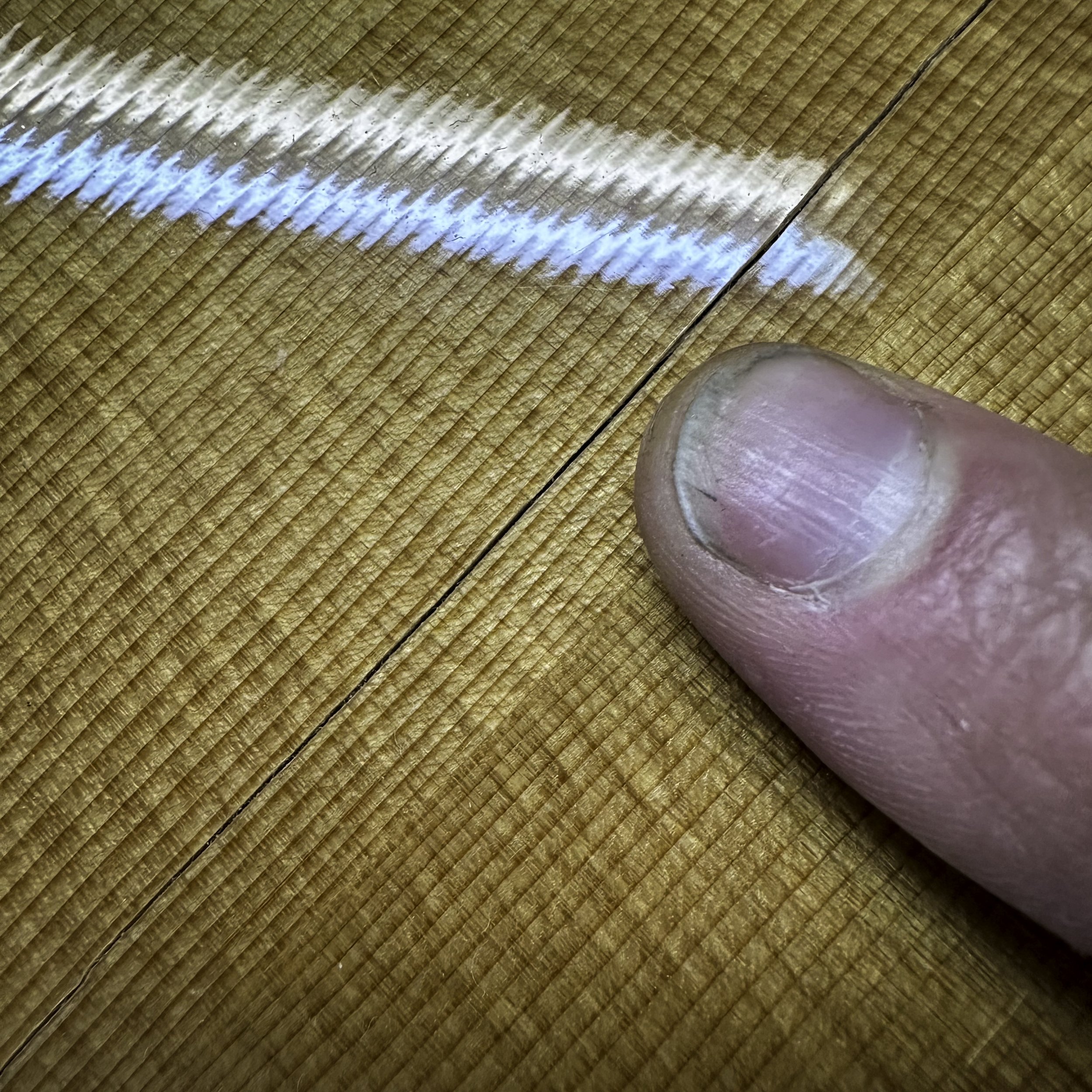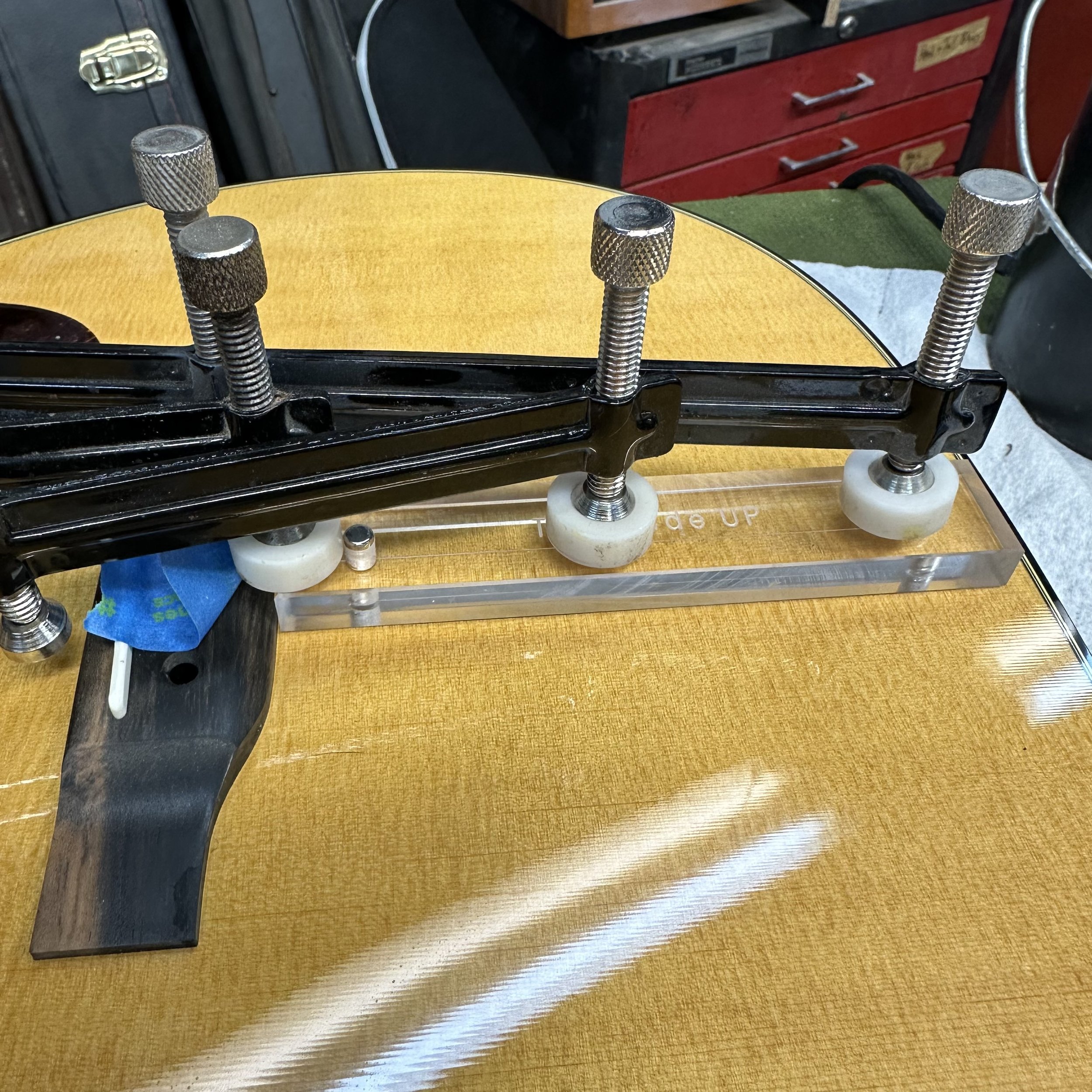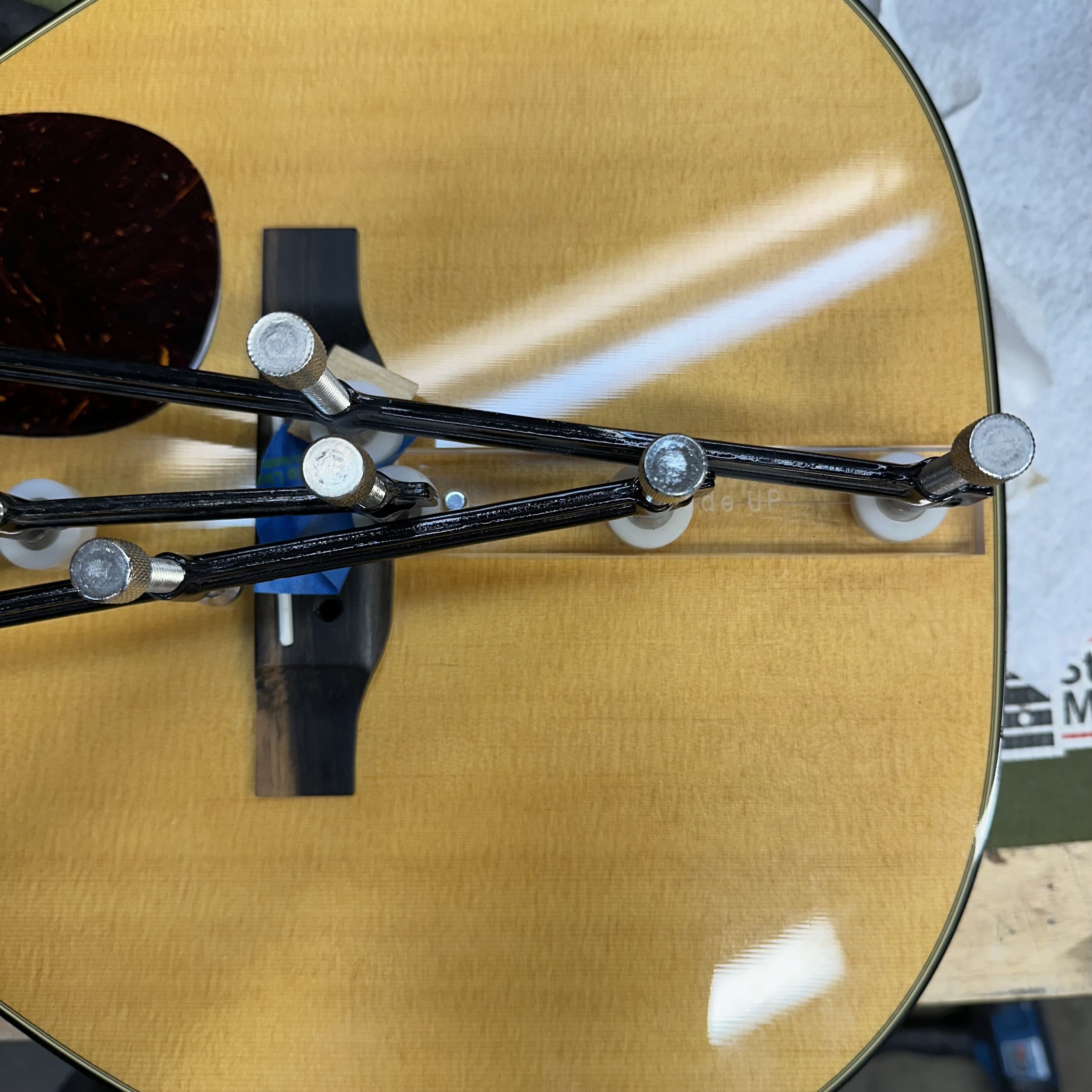Cracks
Not all cracks are created equal, and the price to repair them reflects that.
All cracks will be cleated with full length “TJ Thompson” style cleats.
In short, fix a crack as soon as you notice one.
Crack types: New/Old, Clean/Dirty, Tight/Wide.
New: The easiest crack to repair (This type are usually tight and clean).
Clean: The easiest crack to repair (The older the crack, the less clean it inevitably is).
Tight: 0.001”- 0.005” wide. The easiest crack to repair (Best looking after repair too).
The easiest crack to repair is a New, Clean, Tight, crack.
Old: Cracked years ago and usually dirty with grime which has to be cleaned before gluing for good adhesion. An old crack may have also oxidized which makes a crack darker so some light bleaching may be required for best aesthetics.
Dirty: Needs to be cleaned, & possibly bleached, before gluing for good adhesion & color.
Wide: (1) 0.005”-0.010”+ wide. Typically humidity related. Any guitar with a wide crack I hang on my workshop wall for 2-4 weeks to see if the crack closes a bit, which it often does at least 50%.
(2) The wider the crack, the worse the glue line will look.
(3) A crack over 0.015”+ wide may require a splint of new wood to best fill the cavity. The splint is then color matched to the top and finish added- (This is most extensive crack repair and usually reserved for better quality, more expensive guitars.)
The most time consuming (expensive) crack to repair is an Old, Dirty, Wide, crack.
A crack can be any 3 combinations of these 6 elements. e.g:
An old crack can be tight and clean.
A new crack can be wide and dirty.
In short, fix a crack as soon as you notice one.

A 0.020" wide humidity crack that needed a splint.

0.003" wide crack (about what office paper is) still looks wide!

The same 0.003" crack

A very common place to find a crack on vintage instruments

Old wide dirty crack that was previously badly repaired. This is a 1942 Gibson L5 archtop worth about $20,000

TJ Thompson cleat cauls. Note the inside caul (top) has custom cutouts for the braces of this particular guitar.

TJ Thompson full length Cleat glued in with hot hide glue.

TJ Thompson full length cleats being clamped

TJ Thompson full length cleats being clamped (Top view)